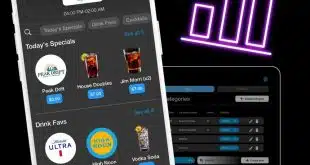As more financial institutions offer cardless transactions, will they be a harbinger of broader mobile-wallet adoption?
The introduction of cardless ATMs, which rely on a financial institution’s mobile wallet instead of a debit card to make an ATM withdrawal, could help further the adoption of mobile wallets and mobile payments.
That’s the sunny assessment of Jerimy Saldivar at Peoples Bank, a Bellingham, Wash.-based financial institution with 24 branches. Peoples Bank began offering cardless ATM withdrawals in December. Peoples Bank uses a service devised by Jacksonville, Fla.-based Fidelity National Information Services Inc. (FIS).
“We believe that the mobile wallet will be the payment method in five to 10 years,” says Saldivar, vice president of electronic banking.
Peoples Bank already has company in the nascent cardless ATM arena, and soon will have more. BMO Harris Bank, the U.S. affiliate of BMO Financial Group (Bank of Montreal), launched cardless ATM withdrawals almost a year ago, and JPMorgan Chase & Co. and Bank of America Corp. recently announced plans to offer the service to their customers.
With both the Peoples Bank and BMO Harris systems, the customer logs in to her mobile-banking app to request a withdrawal amount. The application sends a token to the user’s device linking the user, her account number, and the requested transaction.
Later, at one of her bank’s ATMs, the user pushes a “mobile” button on the ATM screen and, using the smart phone’s camera, scans a QR code displayed on the screen to identify herself and trigger cash dispensing via an encrypted connection to a cloud server.
By contrast, Bank of America intends to use near-field communication (NFC) technology for its service. “It will enable customers to leverage NFC technology on their smart phones to authenticate at a Bank of America ATM without needing their debit card,” a BofA spokeswoman says.
Initially the service will be available to BofA employees at select ATMs in Silicon Valley, San Francisco, Charlotte, N.C., New York, and Boston, with a mid-year debut for customers, the spokeswoman says.
‘The Biggest Struggle’
In some instances, NFC cardless ATM transactions could be compatible with Apple Pay, Apple Inc.’s mobile-payment service, which uses NFC technology.
Saldivar says cardless ATM service, which his bank dubs Mobile Cash, “is a great way to introduce our customers to thinking of their smart phones as payments devices.” Providing Mobile Cash at its 30 ATMS required only software updates, Saldivar says. The bank also completed its EMV-acceptance upgrade at the same time.
To date, of the bank’s customers who have the app, about 3% have activated the Mobile Cash option, Saldivar says. The goal is to achieve 10% by year’s end. To get there, Peoples Bank is planning promotions and an education push.
“We found the biggest struggle is explaining what it is and the benefit it offers,” Saldivar says. “You almost have to show it in person for people to understand the benefits.” Branch employees provide a walkthrough with customers at branch ATMs, he says.
Since its March debut, mobile cash access at Chicago-based BMO Harris, which makes the service available on 900 of its 1,300 ATMs, has been the focus of a concerted education campaign that starts with employees and relies on mass media to reach consumers.
With a lot of outbound marketing, including messages within its mobile app, the coveted word-of-mouth messaging is building, says Doug Peacock, vice president and mobile banking lead. Anecdotally, some BMO Harris customers have asked others why they took a picture of the ATM when completing a cardless transaction, he says.
Safer Transactions
The benefit for consumers is a speedier ATM cash withdrawal. “It’s much faster than a normal card transaction,” Peacock says. It takes about 15 seconds to complete a cardless ATM withdrawal, compared with 60 to 90 seconds for a card-based one, regardless of whether it’s a chip or magnetic-stripe transaction, he says.
“The other real benefit is it brings the bank to the customer,” he says. Customers can use the BMO Harris app to check an account balance, transfer funds, and withdraw cash. A person-to-person payment feature is in development, too, Peacock says. “The phone becomes a remote control with the ATM,” he says.
The bank benefits from providing what it considers to be a safer ATM transaction. Without a physical connection between the phone and the ATM, the opportunity for a skimming device to intercept the transaction is gone, Peacock says. “The barcode is representing the time of day and what terminal the transaction is taking place at,” he says. “Everything else is tokenized. Nothing is passed in the clear.”
Saldivar echoes that perspective. Mobile Cash access is authenticated within the Peoples Bank app by a user name and password, or a biometric, he says. A plastic card doesn’t have such capabilities beyond a four-digit PIN. “Is a $1.40 piece of plastic more secure than an $800 computer?” Saldivar asks.
Expectations were that consumers would take to using their bank’s smart-phone apps as a remote control for ATM transactions, says Doug Brown, senior vice president and general manager of mobile at FIS. “What we didn’t expect is that people understand very well the risks of skimming and privacy,” Brown says. That comes from consumer feedback, he says. They liked that they don’t have to insert a debit card into an ATM and risk it being skimmed or their PINs being surreptitiously captured
Additionally, the bank’s app becomes more personalized for customers. It’s not just about providing cardless ATM access, BMO’s Peacock says. Mobile deposit, marketing messages geared to consumer interests, and, soon, the ability to disable a card if it’s lost or stolen, all provide peace of mind and control to the consumer, he says.
‘An Obvious Trajectory’
Mobile-wallet adoption, and the potential it holds for how consumers interact with their financial institutions, has ATM manufacturers and core processors servicing banks and credit unions preparing, too.
Diebold Inc. has zeroed in on the mobile-to-ATM integration. “It seemed an obvious trajectory for authentication and how transactions originate,” says Devon Watson, vice president of software research and strategy at the North Canton, Ohio-based ATM manufacturer. “In North America, the need was for a pretty sleek, very seamless user-friendly way to do mobile authentication for a few reasons.”
Diebold offers a Mobile Cash Access product that works with a Quick Response code displayed on ATM screens. Peoples Bank uses Diebold machines, Saldivar says.
Diebold also has an NFC-based cardless ATM product that relies on a mobile wallet developed by SimplyTapp Inc., an Austin, Texas-based host card emulation developer. SimplyTapp provides a wallet that financial institutions can rebrand, with Diebold providing the authentication service, Watson says.
Chief among the reasons for mobile ATM authentication is the proliferation of mobile wallets. “Our bank customers are sitting in the middle of potentially a lot of third-party digital wallets,” Watson says, “and onboarding to these wallets can be a challenge.”
Then, there has to be a secure way to to connect the user, her smart phone, and her card credentials in one quick transaction, he says. Diebold offers Xpression SafeLoad as a service to authenticate users.
‘Very Critical’
Diebold is at work on another cardless ATM concept that Citigroup Inc. is testing in its lab. Dubbed Irving, the self-service machine has no screen. In ATM parlance, it’s headless, just like a character in “The Legend of Sleepy Hollow,” the famous short story written by Washington Irving.
Success for Irving banks on consumers bringing their own devices. “There’s no need for a screen because the consumer is going to use the phone,” Watson says. The machine acts solely as a cash dispenser. It has no receipt printer or PIN pad. Everything, except for the actual delivery of cash, happens on the consumer’s handset. “Why not slim down the machine, and make it the thinnest, lightest, sleekest unit we can?”
Irving’s test is ongoing. Lessons learned will be incorporated into the commercial version, which Watson expects will be introduced this year.
“We’re on an inevitable path toward more use of the consumer’s phone in lieu of the card,” Watson says. “We’re in the very first inning of the trend. The ATM industry is trying to stay in the forefront.”
Bank processor Fiserv Inc., too, is looking ahead. It offers a service that enables a participating financial institution, whether it uses Fiserv for its core processing needs or not, to offer card-free ATM access, says Dave Keenan, senior vice president of network solutions. The bank or credit union must belong to Accel, Fiserv’s debit network.
Fiserv’s service relies on a program that enables issuers to create a token that can be constrained by a variety of factors, such as one-time-use, time limits, or amount limits, Keenan says. This token could then be used to authorize a card-free ATM transaction at any participating network ATM.
In the Fiserv scenario, a consumer who may have lost his debit card could be issued an 11-digit passcode he could input into the ATM to retrieve cash. This code is tied to a token that is routed over standard ATM rails, Keenan says. This type of transaction appears as another cash-advance transaction passing over the network, he says.
Fiserv also has designs to use the tokens, under the Popmoney brand, as an expedited peer-to-peer payment service, he says. Popmoney Send Cash also will enable users to proceed directly to an ATM to retrieve their cash without having to transfer the funds to a separate bank account. Popmoney is Fiserv’s P2P product.
With Send Cash, a sender initiates a P2P transfer using Popmoney. The recipient receives a text or email notification of the transfer. Upon arrival at a Popmoney-enabled ATM, the recipient enters the passcode after pressing the Popmoney button on the ATM display.
Keenan expects the Fiserv service to be available at approximately 30,000 ATMs by yearend, which, after a software update, will have a Popmoney button displayed on the screen. Upon successful entry of the passcode, the cash is dispensed. No card is necessary.
“The needs for cash are not going away,” Keenan says. “And the need for faster, better access to cash is very critical.”
‘Decisively Sluggish’
While the banks are enthusiastic about the prospects for wider cardless ATM use, experts warn consumer interest will be slow in coming.
After all, ATMs themselves were slow to win consumer adoption when they were first introduced, and each new payments service, including snazzy mobile wallets like Apple Inc.’s Apple Pay, has ridden a gently upsloping adoption curve.
“Cardless ATM transactions are an interesting and appropriate evolution, but consumer adoption will most likely only be a fraction of Apple Pay’s adoption, which has been decisively sluggish,” warns Sam Ditzion, chief executive of Boston-based Tremont Capital Group.




